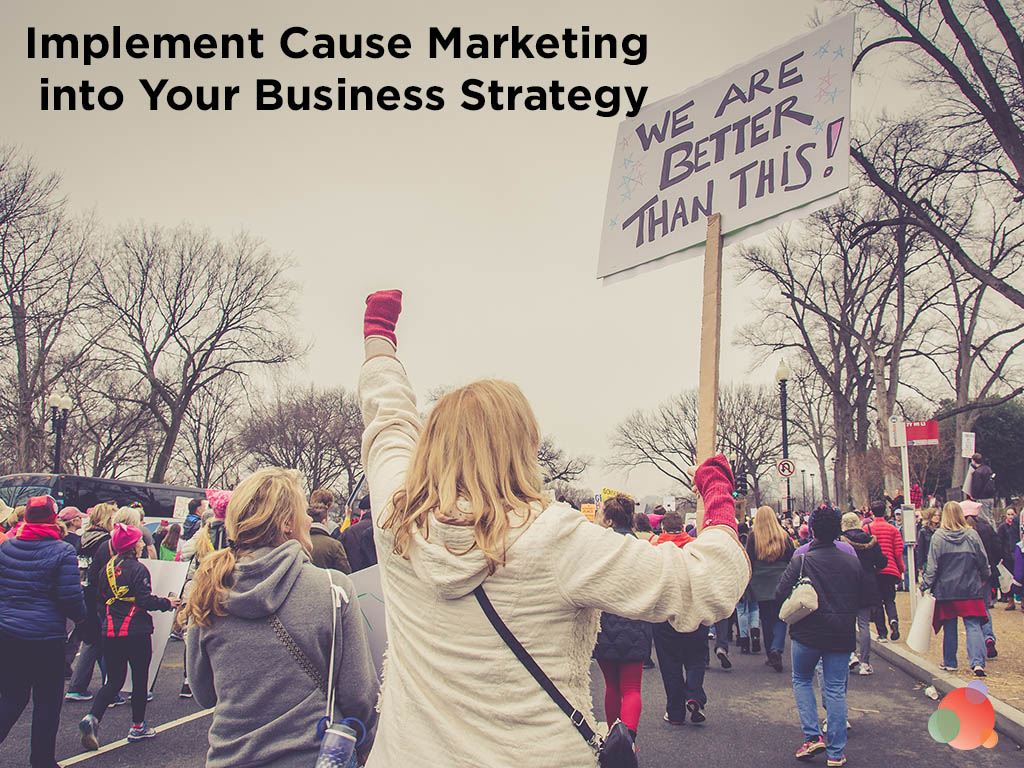 Cause marketing is not new. It’s been around for ages.
Cause marketing is not new. It’s been around for ages.
But what is cause marketing?
Specifically, it’s a strategy where a for-profit business supports or incorporates a non-profit charity or social cause into their campaigning.
The Marriott Corporation and the March of Dimes were two of the first instances of this practice back in 1976.
Fast forward to today? Increasingly, we are constantly connected to our smart devices.
More business transactions are happening online.
And because of this, cause marketing is evolving and becoming more important now than it ever has before.
Why is it So Important Now?
Why are we talking about cause marketing now?
One reason: Millennials are quickly claiming more and more spending power across the globe.
According to this study by Cone Communications, over 90 percent of consumers in this age group would happily switch their purchasing decisions to a brand associating with a cause.
With this in mind, a strong cause marketing initiative is a game changer for revenue and customer loyalty. Both now and in the future.
That said, cause marketing is by no means easy.
In fact, a failure on this front can cause a great deal of ongoing damage to your brand image.
Taking this into account, Here are three critical strategies you must account for when implementing cause marketing into your online business plan.
Convey Real Proof of Devotion
Simply put, people value authenticity from businesses.
On a daily basis, the average consumer sees exposure to more bits and pieces of brand messaging than they know what to do with.
As a result, audiences have developed a fairly refined BS detector.
In other words, a poorly executed cause marketing campaign will stick out like a sore thumb and can ruin your credibility.
Most followers of social causes can tell in a second whether you are being authentic, or just using this practice to attract eyeballs.
The solution?
When promoting brand association with a cause, create a page that speaks to personal investment. Provide tangible proof of the commitment to, and alignment between, the brand and the cause.
Now there are many different types of cause marketing and the degree to which businesses invest in it.
The practice can be as simple as a small contribution of profits every month, or as extensive as a lifelong partnership to spread general awareness.
Or, in some cases, the cause can define the brand itself (think Patagonia).
But regardless of your investment, there needs to be rock solid proof you are actually devoted to a relevant cause.
Simply having a CTA button in the corner of your website that says something like: “Click to Donate to Homelessness” will not cut it.
While donating to homelessness is a great cause, unfortunately, this alone is too broad.
You should have a designated landing page spelling out the following information:
- Who will benefit?
- What foundation or social cause are you donating to?
- Why is your business is supporting it?
- Where are your customers’ contributions going, exactly?
- When and how long is the campaign running?
- What are your goals?
- How are you currently doing? What are the current results?
- How can people get involved?
These are, of course, just the basics of what the landing page could (and should) entail.
Here is a great example from the Stella Artois and Water.org campaign:
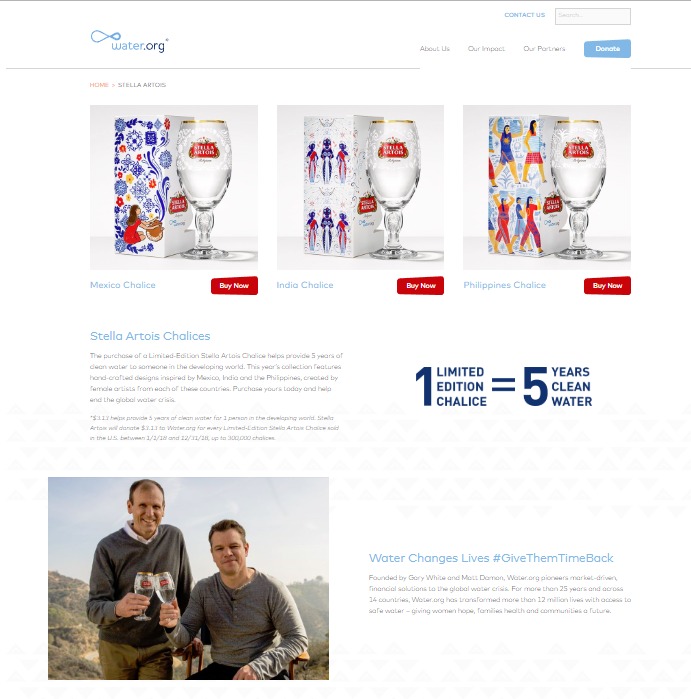
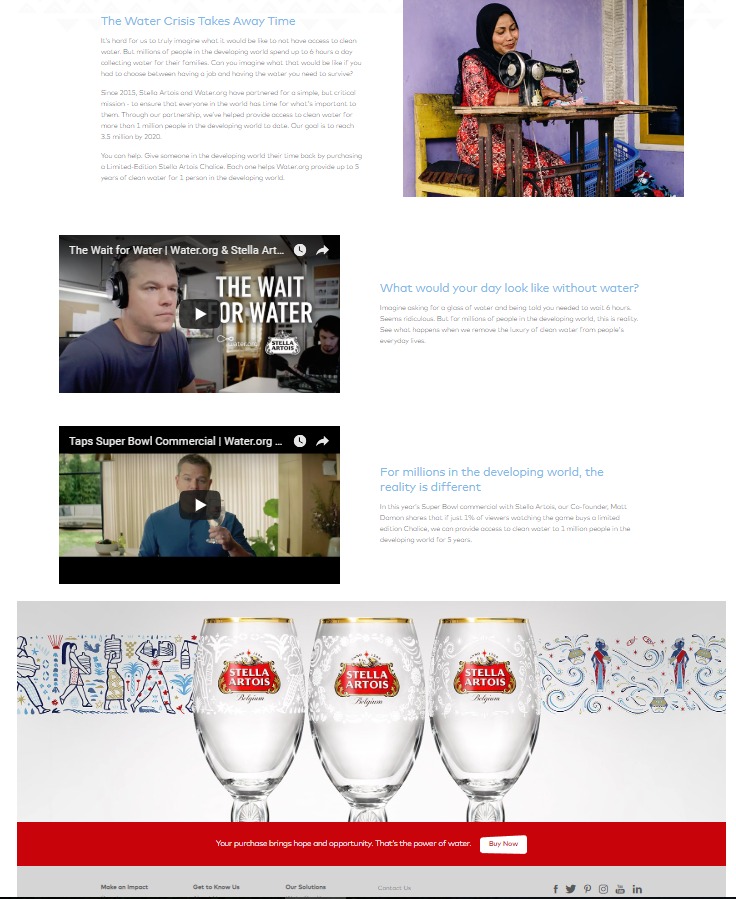
The page clearly states the investment, relevancy, devotion, goals, and all the necessary information to explain the who, what, why, where, when, and how.
Find Common Overlaps
One of the biggest benefits of cause marketing is it puts you on the map for two different entities: your products and services and the cause you support.
Knowing this, you have to be very strategic in making your partnership decision. There must be a healthy degree of overlap.
From a consumer standpoint, this directly attributes to the perception of authenticity.
From a marketing standpoint, finding the common overlaps is crucial for SEO.
You need to know exactly how your business and social cause align, as well as, how people find both entities on the web.
For example, let’s start with one of the most epic cause marketing failures: KFC’s “Buckets for a Cure.”
For every bucket of chicken sold, the campaign donated $0.50 to the Susan G. Komen Foundation for breast cancer research.
And while the campaign certainly had monetary success, it didn’t do so well from a PR standpoint – for both brands.
The reason? There were no congruencies between the two entities.
Honestly, how does fried chicken relate to breast cancer research?
Many would even argue that greasy fast food might even contribute to cancer.
Then… Adjust SEO
Now, let’s look at it from an SEO perspective.
How many search queries do you think contain both “fried chicken” and “breast cancer”?
Let’s take a look:
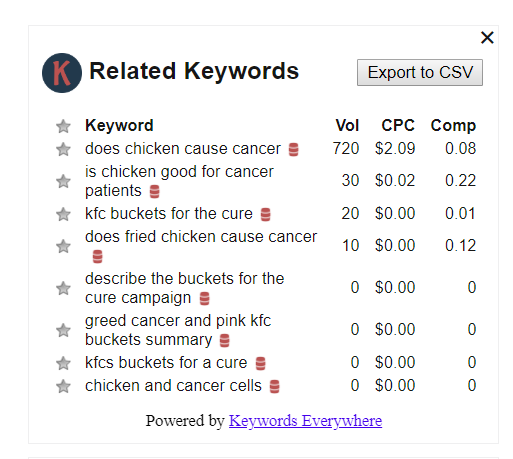
Not exactly an SEO match made in heaven.
When you are laying the framework partnership between a cause and your online business, the e-commerce SEO potential plays a large role in how you execute the campaign.
Terms like “environmentally friendly clothing” and “conflict-free diamonds” are prime examples of good SEO overlap between an online business and a social cause.
Brilliant Earth does a fantastic job of promoting their cause to only source diamonds from ethical mining practices.
And they go so far as to describe their process for avoiding both direct and indirect financing for rebel movements against recognized governments.
The landing page with this information is strategically crafted around relevant search terms and phrases.
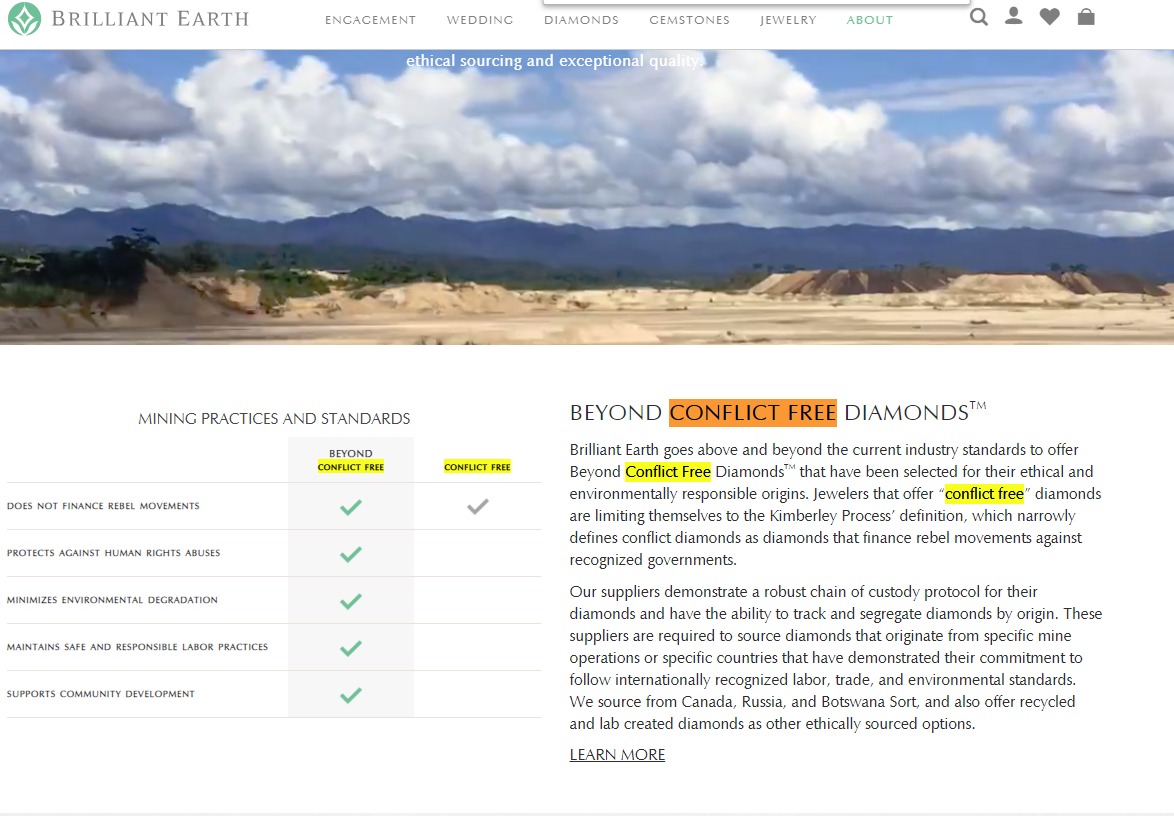
Ultimately, cause marketing is all about parallels.
The stronger or more clearly your business goals connect or align to a social cause, the better your search presence and overall authenticity will be.
Create Shareable Messages
From a revenue perspective, the goal of cause marketing is to make customers feel good about spending their money and provide comfort in knowing their purchases are making the world a better place.
More importantly, this feeling should prompt them to share your messaging.
The key to doing this is finding a hot-button issue that’s more or less mainstream.
An absolutely phenomenal example of this was Saltwater Brewery’s “Edible Six Pack Rings” campaign.
The ever-increasing pollution in the ocean is a social cause that’s been on mainstream radar for decades.
There is perhaps no bigger poster child for polluting the ocean than the plastic six-pack ring.

Saltwater decided to launch a campaign to support cleaning up the ocean.
Their approach was to produce edible six-pack rings which are biodegradable and are safe for consumption by sea animals.
In terms of shareability, one of the fascinating things about the campaign is Saltwater Brewery invested $0 in paid media.
The organic message was powerful, gathering 105 million views and nearly two million shares in less than five days!
In a short amount of time, this tiny brewery became an industry pioneer.
Cause marketing should be about big dreams and milestones.
So let the positive effects your customers are making be known.
Make the message visually appealing and put the issue into perspective.
By creating excitement, you’ll get people to buy your products and services.
And you’ll help them understand they’re creating a change bigger than themselves and your business.
The Cause Marketing Golden Formula
If you execute a cause marketing campaign correctly, you’ll do wonders to solidify your client’s brand values.
You’ll get people excited about what they offer and attract people from all over the world.
However, finding the golden formula is no simple task. Cause marketing isn’t a magic bullet.
Brands everywhere realize the sheer power cause marketing can possess, yet few are able to execute a solution that truly works.
Regardless of what cause you aim to support with your online business, the most important components are authenticity, smart overlaps in messaging, and shareability.
If you can pinpoint these elements, you’re on the right track.
You’ll create a win for your business, the cause, and your customers.
Photo by Jerry Kiesewetter on Unsplash